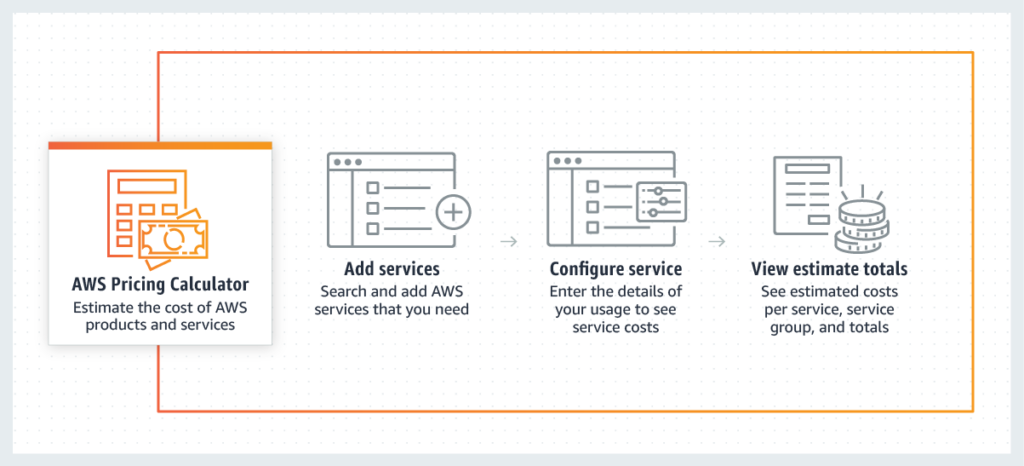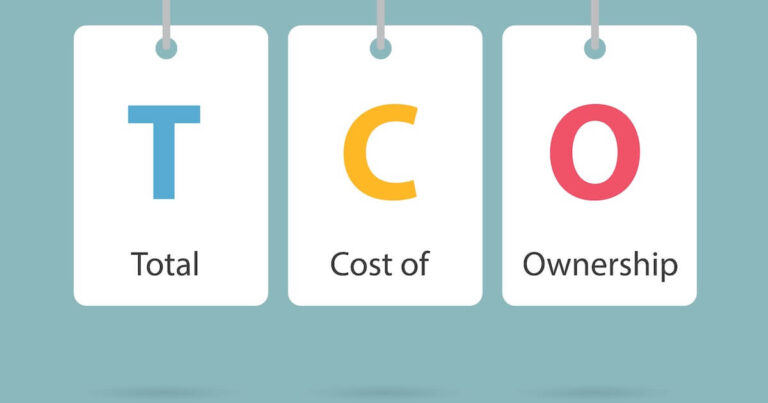Cloud TCO calculates all costs and benefits of building and moving applications to cloud platforms. It helps CIOs, CTOs, and IT leaders weigh the costs of adopting cloud solutions over on-premises deployments, whether it’s an excellent move for the company and whether the cloud benefits meet its promises.
TCO is usually measured for a 3-year or 5-years bond to realize its actual benefits. Generally, cloud providers offer their own cloud calculators, and organizations must perform their own evaluations since cloud deployment is different and isn’t a one-size-fits-all solution. Calculating cloud TCO is crucial when you decide to build or buy new resources for an on-premises data center and when you need to host an application, and you need to decide whether to do the deployment on-premises or in the cloud to leverage better cost options available out there in the market.
Why Is TCO Important?
The upfront purchase cost is simple to determine; the difficult part is anticipating the hidden expenditures. The total cost of ownership analysis helps clarify this matter and enables better decision-making. TCO analysis helps identify direct and indirect costs, such as cloud planning, migration, architecting, and operating the cloud infrastructure. Technology leaders use the TCO to understand the viability of potential cloud models. The analysis provides in-depth insight into the costs of data centers, maintenance and support, development, business continuity and disaster recovery, network, and more resources required to run an application. It also enables executives and IT leaders to learn about opportunity cost since the primary purpose of doing TCO is to attain lower costs than operating on-premises.
When defining a cloud TCO model existing and future infrastructure must be accounted for. Some attributes of a TCO model should include the following:
- Actual operating costs for cloud services as demand and load fluctuate.
- Costs of application migration to cloud platforms, including refactoring and code changes to suit cloud or hybrid environments.
- When retiring on-site infrastructure, there may be sunk costs associated with it, such as facility fees if a data center is no longer required.
- Costs associated with reducing compliance concerns brought on by moving off-site, such as potential fines for HIPAA or GDPR violations.
- The expense of employing new employees or retraining existing ones to ensure they have the necessary skill sets for managing cloud solutions.
- The potential benefit of migrating to the cloud is to stop making capital expenditures.
- Once a cloud platform has been deployed, there may be value in enhanced agility in terms of answering evolving market demand, accelerating time to market, and spinning up new cloud applications.
How Do You Frame The Business Case For TCO?
Preparing a business case to justify the investment in the cloud is no different than building a business case for any other investment. Therefore, let’s discuss the fundamental factor a company or a team is exploring cloud TCO and the goals they want to achieve with cloud deployments.
- If it’s the right time to focus on your core business. This means you don’t want yourself or your team to waste time building and maintaining infrastructure.
- It has become your top priority to reduce our overall IT cost.
- If you are looking to improve performance and expand globally in a flexible way. For example, you want to change how you provision your IT environment and leverage flexibility, agility, and scalability.
Let’s understand these points in a broader context and figure out the significance of developing the business case for cloud TCO.
Business Demand
While building your business case to move to the cloud, you first need to consider your business demand. Is your infrastructure capable of meeting your business’s internal and external demands? How do your IT services change to meet internal and external demands? Is your infrastructure flexible enough to meet the demands in a cost-effective way? You must document answers to these questions to evaluate your use case for moving to the cloud.
Capacity Planning
Second, on the list is the capacity planning of your organization. What is the capacity of your infrastructure? Have you provisioned it for peak hours? What is your average server utilization? What if your resources are over-provisioned? Capacity planning is a pain for IT leaders as they do not know in which capacity the load or data will come. You can’t always advocate guessing, to be precise, in today’s uncertain environment.
Operational Challenges
The third thing is you need to identify your operational challenges. Do you have a plan in place for how you would support the business if the data center runs out of space? Do you have enough hardware deployed? Do you have too much deployed? What about the redundant hardware? Have you budgeted for both average and peak power requirements? The IT team deals with these big headaches from an operational point of view.
Learn more in the ebook of cloud cost optimization best practices that describe how to manage your cloud environment to eliminate cloud waste and make your cloud cost optimization strategy works in your favor.
Cloud TCO: Cost Vs. Value
When considering a move to the cloud, think about the cost and value of any decision. Though the TCO usually focuses on the cost of moving to the cloud, the value here represents the ROI. Comparing the two will decide whether the underlying proposal of using cloud solutions would be a perfect fit for your business. Let’s discuss what should to consider when comparing cost vs. value:
Cost-focused
With cloud services comes the pay-as-you-go model, which lowers overall costs and takes you ahead in capacity planning where you don’t need to guess. Cloud-based pricing and deployment model let you leverage OpEx over CapEx. Therefore, you can instantly set up and provide as many resources as possible in various capacities and instance families. With the cloud comes co-location, which you can leverage to deploy your entire infrastructure environment to save some more good chunks. For example, the AWS TCO calculator is an all-inclusive cloud cost calculator that you can use to calculate the cost of running applications in an on-premises or colocation environment to the AWS platform. It is a self-service tool that you can fill your on-premise or colocation configuration to produce a detailed cost comparison with AWS. As the tool offers basic and advanced views, you can switch and add additional configurations to have an accurate estimate of the cost you will need to spend for the next 3-5 years.

Business value-focused
Cloud platforms put more money back into the business that you can use to innovate more, expand faster, and be better positioned to take advantage of new opportunities that bring value to your business. You can plan your cloud value framework focusing on staff productivity, operational resilience, eliminating undifferentiated heavy lifting, going global in minutes, business agility, and others. You can compare developers’ productivity, maintenance efficiencies with automation, and time saved by eliminating hardware-related tasks. Since cloud services have inbuilt mechanisms to handle planned and unplanned outages, you can think of service-level agreements and reduced risk profiles to calculate the cloud value for your business. Not to forget, new market penetration, acquisition, increased pace of innovation, and faster time to market are just other cloud advantages you must consider.
TCO: How Is It Calculated?
With cloud TCO calculation, some of the cost will disappear when you decide to build the app on the cloud or migrate an application to the cloud from on-premises data center, which includes:
- Server upgrades and replacement.
- The support, upkeep, and eventual replacement of ancillary equipment such as racks, networking hardware, load balancing hardware, and storage devices.
- OS, database, middleware, and application license fees.
- Utility costs for electricity, heating, and cooling.
- Waste due to the need to overprovision servers to meet peak demands.
- Costs of physical real estate or equipment rentals for data centers.
- Inventory and asset management.
- Project Risk.
- Time and effort are required to switch platforms.
Cloud platform saves you from doing several repetitive jobs and also instills automation to save your time and money spent on keeping the infrastructure healthy. Therefore, you can compare the predictable cost with the monthly bill that shifting to a cloud platform will incur.
Conclusion
For organizations to thrive and remain competitive, technical advancement is just as crucial as cost-cutting. Companies are choosing or moving to cloud-based solutions to eliminate IT infrastructure costs and free up capital for innovation. You want to do TCO to ensure your cloud initiatives are ideal for your company and will lead to something other than extraordinary costs.




